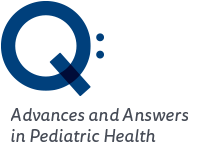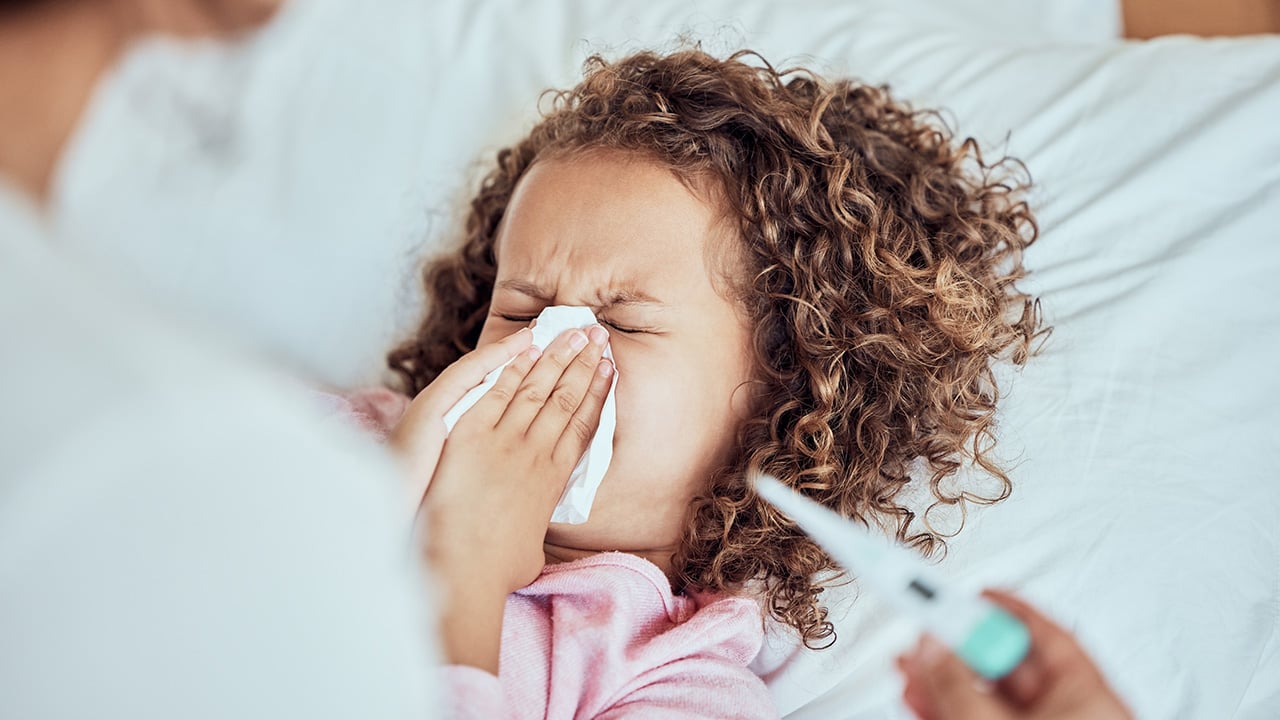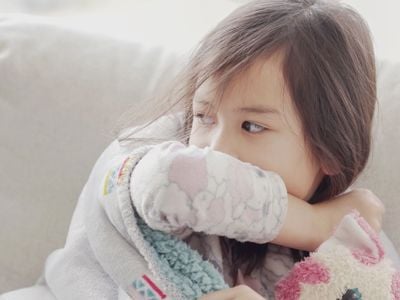- Doctors & Departments
-
Conditions & Advice
- Overview
- Conditions and Symptoms
- Symptom Checker
- Parent Resources
- The Connection Journey
- Calm A Crying Baby
- Sports Articles
- Dosage Tables
- Baby Guide
-
Your Visit
- Overview
- Prepare for Your Visit
- Your Overnight Stay
- Send a Cheer Card
- Family and Patient Resources
- Patient Cost Estimate
- Insurance and Financial Resources
- Online Bill Pay
- Medical Records
- Policies and Procedures
- We Ask Because We Care
Click to find the locations nearest youFind locations by region
See all locations -
Community
- Overview
- Addressing the Youth Mental Health Crisis
- Calendar of Events
- Child Health Advocacy
- Community Health
- Community Partners
- Corporate Relations
- Global Health
- Patient Advocacy
- Patient Stories
- Pediatric Affiliations
- Support Children’s Colorado
- Specialty Outreach Clinics
Your Support Matters
Upcoming Events
Public Meeting: 2024 Community Benefit and Hospital Transformation Program
Tuesday, May 14, 2024Join Children's Hospital Colorado at one of our virtual events to learn...
-
Research & Innovation
- Overview
- Pediatric Clinical Trials
- Q: Pediatric Health Advances
- Discoveries and Milestones
- Training and Internships
- Academic Affiliation
- Investigator Resources
- Funding Opportunities
- Center For Innovation
- Support Our Research
- Research Areas

It starts with a Q:
For the latest cutting-edge research, innovative collaborations and remarkable discoveries in child health, read stories from across all our areas of study in Q: Advances and Answers in Pediatric Health.


Respiratory Illness in Kids: How to Tell the Difference Between COVID-19, RSV, Flu and More

As a parent, you never want your kids to get sick. But it happens — and probably more often than you'd like — especially during the fall and winter. This is the time of year when illnesses like the common cold, influenza (flu), respiratory syncytial virus (RSV) and other viruses are widely circulating. Add in COVID-19, and you’re probably wondering what bug your kid picked up this time.
Many respiratory illnesses in children have similar symptoms, which means it can be difficult to distinguish between the flu vs. COVID-19 vs. colds. But there are some subtle differences between these viruses. Children’s Hospital Colorado pediatric infectious disease specialist Samuel Dominguez, MD, PhD, offers guidance on common respiratory illnesses in kids, how to prevent them and what you should do if your child gets sick.
How to protect your family from respiratory viruses
The best way to prevent getting sick with COVID-19, RSV, flu or any other respiratory illness is to follow these healthy habits to stop germs from spreading
- Stay home when you’re sick.
- Frequently wash your hands.
- Cover your cough.
- Stay up to date on your COVID-19 and flu vaccines, and get your infant or toddler the RSV monoclonal antibody shot if they’re eligible.
- Consider wearing a mask in indoor, crowded spaces when viruses are circulating at high levels in your community.
- If you’re sick, stay away from infants and young children until you feel better. If you have a child 6 months or younger — or one with underlying heart or lung conditions — remain cautious about close contact with others who have cold or flu symptoms.
Even with precautions, it’s likely that your family will catch a virus during cold and flu season, so it’s important to be prepared and recognize the differences between these common illnesses.
Symptoms quick chart
With the help of our experts, we created a chart for quickly comparing symptoms of COVID-19, the flu, RSV, common colds and allergies.
Note: This chart should only be used as a starting point. There are many different viruses that cause respiratory symptoms in children, and symptoms and treatments can vary from person-to-person. If your child is sick, talk with their pediatrician.
| Signs and symptoms in kids | COVID-19 | Influenza (the flu) | RSV/ bronchiolitis | Common respiratory infections (colds) | Seasonal allergies (hay fever) |
|---|---|---|---|---|---|
| Onset of symptoms | Varies; typically gradual | Sudden |
Varies; typically starts mild |
Varies | Typically sudden or ongoing |
| New loss of taste or smell | Sometimes | Uncommon |
Uncommon |
Uncommon | Sometimes |
| Fever | Sometimes*; typically high fever | Very common; typically high fever |
Common |
Varies | Never |
| Tiredness | Severely tired | Severely tired | Common | Varies | Sometimes |
| Cough | Very common; typically dry cough | Very common; typically dry cough |
Very common; often a wheezing cough |
Varies | Sometimes |
| Headache | Common | Very common |
Uncommon |
Varies | Uncommon |
| Loss of appetite/difficulty feeding for babies | Sometimes | Common |
Common |
Varies | Less common |
| Muscle and body aches | Common | Very common |
Uncommon |
Common | Uncommon |
| Sore throat | Common | Common |
Sometimes |
Common | Sometimes; typically mild |
| Runny nose/nasal congestion | Common | Common |
Very common |
Common | Very common |
| Nausea or vomiting | Sometimes | Sometimes | Sometimes | Less common | Uncommon |
| Chills | Sometimes | Very common | Uncommon | Less common | Never |
| Diarrhea | Sometimes | Sometimes | Sometimes | Varies | Never |
| Shortness of breath/breathlessness | Sometimes | Sometimes |
Very common |
Uncommon | Uncommon |
| Wheezing or audible breathing | Sometimes | Sometimes |
Very common |
Sometimes | Uncommon |
*Less than half of children who are diagnosed with COVID-19 will have a fever. Even if your child does not have a fever, it is possible that they could have COVID-19.
Common respiratory illnesses in children
If your child is sniffling, coughing or has a fever or sore throat, it’s possible that they could have picked up a respiratory virus. For many healthy kids, these viruses cause a brief period of illness and discomfort before improving. But for very young children or those with compromised immune systems, even a common respiratory illness can be a cause for concern.
COVID-19 in kids
While COVID-19 infections are nowhere near their peak of the early days of the pandemic, the coronavirus is still circulating throughout Colorado and around the country. Widespread access to safe and effective COVID-19 vaccines has improved outcomes for those who catch the virus. But there are still some things that parents and caregivers should look out for as we move into cold and flu season.
What are COVID-19 symptoms in kids?
COVID-19 affects people differently. Coronavirus symptoms range from mild to severe, and not everyone will have every symptom. In general, symptoms in kids and teens may include:
- Fever/chills
- Cough
- Shortness of breath or difficulty breathing
- Fatigue
- Muscle or body aches
- Headache
- New loss of taste or smell
- Sore throat
- Runny or stuffy nose
- Nausea or vomiting
- Diarrhea
- Abdominal pain
- Poor appetite (or poor feeding)
- Rash
Why you should get the COVID-19 vaccine
It’s true that most children who get infected with COVID-19 fare relatively well. They don’t end up in the hospital or experience lasting effects from the illness. It’s also true that the vaccines aren't 100 percent effective at preventing infection in kids or adults. This is because the virus keeps mutating, and the level of protection the vaccines offer changes as the virus mutates.
However, Dr. Dominguez points out other important reasons to get vaccinated. “The data is very clear that the vaccine does prevent you from getting super sick with the virus,” says Dr. Dominguez. “And if you are around other kids who are high risk or are around grandparents, there are studies that show that you have a decreased risk of transmitting the virus, as well."
Additionally, research shows that staying up to date on your COVID-19 vaccines can help prevent Long COVID, in which symptoms linger for months after the initial infection, although this is less common in kids.
Read the updated COVID-19 vaccine guidelines from the CDC
Why COVID-19 testing is still important
Because COVID-19 is highly contagious and it can take longer for people to develop symptoms, a COVID-19 test can alert you as soon as possible if you have the virus — even if you were infected but don’t have symptoms.
“Knowing if you have the virus sooner means you can isolate and take other precautions sooner,” says Dr. Dominguez. “Taking a COVID test is one of the best things you can do to help control the spread of the virus.”
Tests for the flu and RSV are also available through your healthcare provider, as is a single test that detects the flu, COVID-19 and RSV all at once. Your pediatrician can recommend the type of tests your child needs based on their symptoms and risk factors, and those results can help guide your care plan. For example, we have treatments for COVID-19 that may be recommended for some patients, just like we have treatments that can help ease the symptoms or lower the risk of the flu.
If your child is feeling sick, it’s best to call their primary care provider for recommendations. (If you don’t have a pediatrician, you can call our ParentSmart Healthline.) They can help assess your child’s symptoms and determine if COVID-19 testing — or a test for other viruses — is an appropriate next step.
At-home COVID-19 tests are widely available at most pharmacies and are generally considered accurate for detecting the presence of the coronavirus. These tests provide results in about 10 minutes, which means you can take precautions sooner and prevent others from getting sick, too.
You should use an at-home COVID-19 test if:
- The person being tested is at least 2 years old. Currently, there are no home tests approved for kids under 2.
- You have COVID-19 symptoms. A positive test shows that you have the virus and should take the recommended precautions. If the test is negative, consider retesting in 1 to 2 days, or requesting a PCR test, which is more sensitive, from your primary care doctor.
- You were exposed to someone who has COVID-19 but do not have symptoms. In this case, test 5 days after exposure. Positive results indicate that you have the virus and should take the recommended precautions. If the test is negative, test again in 1 to 2 days.
- You are attending an event or large gathering during times when viruses are circulating at high levels in your community, especially when people at the event are at risk of severe complications from COVID-19. Consider testing immediately prior to the event and skip it if you get a positive result.
The Centers for Disease Control and Prevention (CDC) recommends that people who test positive for COVID-19 stay home and isolate for at least five days, when you are the most infectious. If an individual must be around others during this time, wear a high-quality mask, like an N-95. When isolation can end depends on the severity of your symptoms. Here is an overview of guidance from the CDC:
- If you or your child are symptom-free, you can end isolation after day 5.;
- If you had symptoms, but they are improving, you can end isolation after day 5, if you are fever-free for 24 hours without the use of fever-reducing medication.
- If you or your child is moderately or severely ill or has a weakened immune system, continue to isolate through at least day 10 and consult a healthcare provider.
COVID-19 vs. the flu: Which is more serious?
While most kids experience mild symptoms of both COVID-19 and the flu, in some cases, these conditions can become very serious. When we compare the numbers year by year in people younger than 18, it’s clear that COVID-19 has caused more cases, hospitalizations and deaths than the flu does in a typical year in the United States.
For the past 15-plus years, flu-related deaths in children reported to CDC during regular flu seasons have ranged from 37 to 199 deaths each year. From the start of the pandemic until summer 2023, more than 1,800 children under the age of 18 have died from COVID-19. That averages out to around 600 deaths per year.
Death isn’t the only risk associated with COVID-19. Some people who’ve been infected with the virus experience Long COVID, in which symptoms linger for months after the initial infection, although this is less common in kids. Children can also experience other unique concerns from COVID infections, such as myocarditis, multisystem inflammatory syndrome (MIS-C), abnormal liver enzymes, fatigue, hair loss and skin rashes.
Rarely, a child who was infected with COVID-19 will develop a condition called multisystem inflammatory syndrome in children, or MIS-C, which usually occurs 2 to 6 weeks after the infection. MIS-C is a condition in which different body parts can become inflamed, including the heart, lungs, kidneys, brain, skin, eyes or digestive organs. Most experts think that MIS-C is caused by the body’s immune response to a COVID-19 infection.
In 2022 and 2023, experts have seen fewer cases of MIS-C compared to the first two years of the pandemic, but the reason for this is unclear. “We're not sure if it’s because of widespread immunity to COVID-19 or if the new variants aren’t as likely to cause MIS-C,” says Dr. Dominguez.
However, parents should still be aware of the symptoms. The best way to prevent MIS-C is to take recommended precautions against COVID-19. “We do know that the vaccines reduce the risk of developing MIS-C, as well,” Dr. Dominguez says.
What are MIS-C symptoms in kids?
MIS-C symptoms can include:
- Fever
- Severe abdominal pain
- Vomiting
- Diarrhea
- Rash
- Red eyes or red lips
- Trouble breathing
- Seeming confused/sleepy
- Persistent pain or pressure in the chest
- Pale, gray or blue-colored skin, lips or nail beds, depending on skin tone
If your child is showing these symptoms after a COVID-19 infection, call your primary care provider. In a life-threatening emergency, you should always call 911.
Influenza
Influenza (commonly known as the flu) is a highly contagious respiratory virus that is present year-round, but circulates widely in the fall and winter months, or cold and flu season. The flu causes cold-like symptoms that often come on suddenly and can range from mild to severe. Children under the age of 2, adults over age 65, pregnant and postpartum women, people taking certain medications and those with chronic medical conditions, including lung or heart conditions, can develop severe or life-threatening complications from the flu.
Some of the primary symptoms of the flu overlap with symptoms of COVID-19, making it difficult to distinguish between the two illnesses. Fortunately, the accessibility of at-home COVID-19 tests can make it easy to determine if an individual is infected with COVID. If an individual is at high-risk for severe disease or would qualify for treatment, a flu test may also be recommended.
What are flu symptoms in kids?
Influenza symptoms include:
- Fever/chills
- Cough
- Sore throat
- Runny or stuffy nose
- Muscle or body aches
- Headaches
- Tiredness
- Nausea or vomiting
- Diarrhea
Is the flu a concern this year?
Yes, the flu is always a concern, especially for those who are at a higher risk of severe disease from the virus, such as young infants, those who are immunocompromised or older adults. While it can be difficult to predict how severe the flu season will be, Dr. Dominguez says that there is evidence to suggest that the 2023-24 flu season will be “average.” This is welcome news after a cold and flu season that was longer and more severe than normal in 2022-23.
Should my family get the flu vaccine?
Yes, the best way to prevent the flu is for every adult and child over 6 months old to get the influenza vaccine as soon as cold and flu season begins, usually around the beginning of September. “Everyone should get a flu shot every year,” says Dr. Dominguez. “Not only does it reduce your chances of getting the flu, but if you do get it, your symptoms will likely be less severe.” The flu shot is also very effective in preventing severe disease, hospitalization and death, Dr. Dominguez adds.
Many health insurers, including Medicaid and Medicare, cover the full cost of the flu shot. But even if you don’t have insurance, you can find low-cost or no-cost flu vaccines. Ask your pediatrician or healthcare provider for more information or find a flu clinic in Colorado.
RSV in kids
Respiratory syncytial virus (RSV) is a common, cold-like infection that hits most kids before they turn 2. Though RSV typically circulates in the winter months, it’s made some unseasonal comebacks during the pandemic. In the fall and winter of 2022, children’s hospitals around the country saw a surge in RSV, straining emergency rooms and hospitals.
For healthy children, RSV can be similar to a cold. But infants or immunocompromised children are at risk of complications from the virus, such as bronchiolitis or pneumonia. According to the American Academy of Pediatrics, RSV is the most common cause of hospitalization for children under the age of one. While it is possible to get RSV multiple times, even within the same season, secondary infections are often less severe.
What are RSV symptoms in kids?
Call your pediatrician when you notice these symptoms of RSV:
- High fever and ill appearance (though not all children with RSV experience fever)
- Thick nasal discharge
- Worsening cough
- A cough with discolored mucus
- Signs of dehydration
- Signs they’re having trouble breathing: Look for short, rapid and shallow breaths or retractions, where the chest caves in and the belly expands with each breath
- Unusual irritability or inactivity
- Refusing to nurse or bottle feed
If your child is struggling to breathe, seek out emergency care.
What treatments or vaccines are available for RSV?
Most children recover quickly from RSV with at-home treatment, such as fever-reducing medication, nasal suction and plenty of fluids. In severe cases, RSV may require treatment in the hospital, so the child can receive oxygen and intravenous (IV) fluids.
Previously, there was only one monoclonal antibody shot available to prevent RSV in high-risk babies under 2 years old, palivizumab. The injection is given once a month during cold and flu season. But in the summer of 2023, the FDA approved nirsevimab, another monoclonal antibody injection that can be given to all babies and high-risk toddlers, as well as Abrysvo, a vaccine that can be administered during the third trimester of pregnancy to protect infants against RSV for up to six months. While these options are currently available in limited supplies, they represent a promising step in preventing severe RSV infections in babies and toddlers.
Most kids get RSV before they turn 2, and most recover quickly. But RSV can cause serious complications for infants, preemies, and babies and young children with underlying medical conditions. RSV can lead to pneumonia and bronchiolitis, when the small airways in the lungs become inflamed and clogged with mucus. Even kids without underlying conditions can get very sick with RSV. Kids and babies with more severe cases of RSV often require a trip to the emergency department or care in the hospital so they can receive breathing support, like oxygen.
RSV can cause re-hospitalization for babies who have been in the Neonatal Intensive Care Unit (NICU) due to prematurity or other medical conditions. Some NICU babies that require oxygen are eligible for an antibody that treats RSV, which the care team would recommend along with other vaccines for babies with medical conditions.
Yes, adults and older children can and do get RSV, but they typically don’t get as sick as young children or seniors. Dr. Dominguez puts it this way: If you or a child in your home has a cold, consider that it might be RSV, and act accordingly. Wash your hands, cover your cough, stay home when you’re sick — and don’t kiss any babies or grandparents until you feel better.
Dr. Dominguez also recommends that adults over the age of 60 receive the recently approved RSV vaccine as an added layer of protection against the virus.
The common cold in kids
Common colds are normal. In fact, healthy children get about six colds a year. According to the National Institutes of Health, there are more than 200 different viruses, such as rhinoviruses, that can cause cold symptoms.
What are cold symptoms in kids?
Common cold symptoms include:
- Runny or stuffy nose
- Sneezing
- Sore throat
- Gray, yellow or green nasal discharge
- Cough
- Scratchy voice
How can you tell the difference between a cold, the flu and COVID-19?
It can be difficult to tell the difference between these respiratory illnesses. Generally, a cold is milder than the flu, and symptoms appear gradually. Flu symptoms are usually sudden and severe. With the flu, your child will likely have a high fever, a headache, severe tiredness, achy muscles and chills. For a common cold, they may have a low fever to start, but they won’t have a headache or muscle aches, and they won’t have chills. In very young children, fever may be the only symptom of flu infection.
Because COVID-19 symptoms vary widely and often range from mild to severe, the only way to know for sure if your child has the virus is by taking a COVID-19 test.
Ear, nose and throat infections
While ear, nose and throat conditions aren’t respiratory viruses, they’re often the result of illnesses like a cold or the flu. In the early stages of the pandemic, doctors were seeing fewer ear and sinus infections due to public health measures like social distancing and masking. In the fall of 2022, we saw an increase in bacterial and viral infections in kids, causing an uptick in ear, nose and throat conditions like ear infections, sinus infections and strep throat. In some cases, these conditions need to be treated by antibiotics.
“With the comeback of common respiratory illnesses and viruses like RSV, we’ve again seen an increase in strep throat and ear infections,” says Children’s Colorado pediatric otolaryngologist Sarah Gitomer, MD. “In fact, we’re seeing more complicated infections now than in the past several years.”
The common cold in kids
Common colds are normal. In fact, healthy children get about six colds a year. According to the National Institutes of Health, there are more than 200 different viruses, such as rhinoviruses, that can cause cold symptoms.
What are cold symptoms in kids?
Common cold symptoms include:
- Runny or stuffy nose
- Sneezing
- Sore throat
- Gray, yellow or green nasal discharge
- Cough
- Scratchy voice
How can you tell the difference between a cold, the flu and COVID-19?
It can be difficult to tell the difference between these respiratory illnesses. Generally, a cold is milder than the flu, and symptoms appear gradually. Flu symptoms are usually sudden and severe. With the flu, your child will likely have a high fever, a headache, severe tiredness, achy muscles and chills. For a common cold, they may have a low fever to start, but they won’t have a headache or muscle aches, and they won’t have chills. In very young children, fever may be the only symptom of flu infection.
Because COVID-19 symptoms vary widely and often range from mild to severe, the only way to know for sure if your child has the virus is by taking a COVID-19 test.
Ear, nose and throat infections
While ear, nose and throat conditions aren’t respiratory viruses, they’re often the result of illnesses like a cold or the flu. In the early stages of the pandemic, doctors were seeing fewer ear and sinus infections due to public health measures like social distancing and masking. In the fall of 2022, we saw an increase in bacterial and viral infections in kids, causing an uptick in ear, nose and throat conditions like ear infections, sinus infections and strep throat. In some cases, these conditions need to be treated by antibiotics.
“With the comeback of common respiratory illnesses and viruses like RSV, we’ve again seen an increase in strep throat and ear infections,” says Children’s Colorado pediatric otolaryngologist Sarah Gitomer, MD. “In fact, we’re seeing more complicated infections now than in the past several years.”
About 85% of children experience at least one ear infection during childhood. Some ear infections can resolve without antibiotics. But Dr. Gitomer says parents should call their child’s primary care provider if they see a combination of the following symptoms:
- Ear pain
- Drainage of fluid from the ear
- Tugging or pulling at an ear
- Fussiness or crying more than usual
- Trouble hearing sounds
- Loss of balance
- Headache
When kids have multiple ear infections in a matter of months, it may be time to meet with one of our ear, nose and throat specialists to discuss ENT surgery.
The sinuses are the system of nasal cavities in the skull. These cavities are usually empty, but they can become blocked with fluid and germs when you have a viral infection like a common cold. The blockage causes the tissue along these cavities to become inflamed, and that’s when a sinus infection (or sinusitis) can occur.
Sinus infection symptoms include:
- Fever (generally only associated with acute sinusitis)
- Yellow or green nasal discharge
- Cough
- Headache
- Facial pain or facial pressure
- Nasal congestion (snoring and mouth breathing)
- Postnasal drip (the feeling of mucus building up in the throat or dripping from the back of your nose)
A sinus infection typically resolves on its own with over-the-counter medications and does not require parents to seek medical care for their child. Occasionally, you can get a bacterial infection in your sinuses; the most common sign is when your symptoms last more than 10 days. If your child’s sinus symptoms have not improved in this time period, it’s time to call a doctor.
“It’s important to treat these longer infections with antibiotics because, in rare cases, untreated sinus infections can spread to areas around the sinuses,” says Dr. Gitomer. “When this happens, symptoms can include a red, puffy or bulging eye, decreased or painful movement of the eye or vision loss, or severe headaches.”
In these cases, Gitomer says it’s important to contact your primary care provider. Your child will likely need antibiotics and may need to be seen by a pediatric otolaryngologist,: an ear, nose and throat surgeon.
“A sore throat is a common symptom of the flu and a cold, so there’s always a question of how to tell when it’s something more,” says Dr. Gitomer. “A sore throat with a cough, runny nose or raspy voice indicates that your child likely has a viral infection, not a bacterial infection like strep throat.”
Strep throat symptoms in kids can include:
- A sore throat that comes on rapidly
- Painful swallowing
- Fever
- Headache
- Swollen tonsils
- Red spots on the roof of the mouth or tonsils
- Swollen lymph nodes in the neck
- White streaks of pus on the tonsils
If your child is experiencing these symptoms, call their pediatrician and tell them you suspect your child may have strep throat so they can be tested.
Enterovirus D68 and acute flaccid myelitis
Acute flaccid myelitis (AFM) is an uncommon but serious neurological condition. One of the causes of AFM is a respiratory virus called enterovirus D68, abbreviated as EV-D68. AFM primarily causes limb weakness and paralysis, as well as loss of muscle tone, but other symptoms can also occur.
AFM first emerged in 2014, and experts at Children’s Colorado and the University of Colorado School of Medicine were the first to link an outbreak of AFM to the outbreak of the respiratory virus EV-D68. Prior to the pandemic this virus circulated every other year. Colorado saw an increase in cases of EV-D68 in the fall of 2022 and experts predict that we will not see a large increase in cases again until late summer or early fall of 2024. In rare cases, getting sick with this enterovirus can lead to AFM.
“Although AFM is rare, parents should know the symptoms and keep an eye out for them,” says Dr. Dominguez. “If your child is exhibiting signs of AFM, or any signs of paralysis, seek medical attention immediately.”
Enterovirus D68 and acute flaccid myelitis
Acute flaccid myelitis (AFM) is an uncommon but serious neurological condition. One of the causes of AFM is a respiratory virus called enterovirus D68, abbreviated as EV-D68. AFM primarily causes limb weakness and paralysis, as well as loss of muscle tone, but other symptoms can also occur.
AFM first emerged in 2014, and experts at Children’s Colorado and the University of Colorado School of Medicine were the first to link an outbreak of AFM to the outbreak of the respiratory virus EV-D68. Prior to the pandemic this virus circulated every other year. Colorado saw an increase in cases of EV-D68 in the fall of 2022 and experts predict that we will not see a large increase in cases again until late summer or early fall of 2024. In rare cases, getting sick with this enterovirus can lead to AFM.
“Although AFM is rare, parents should know the symptoms and keep an eye out for them,” says Dr. Dominguez. “If your child is exhibiting signs of AFM, or any signs of paralysis, seek medical attention immediately.”
An EV-D68 infection can look a lot like the common cold, but some patients also have asthma-like symptoms, including shortness of breath and wheezing. Some cases can require hospitalization, especially for kids with asthma. If your child has been sick, keep an eye out for AFM, which tends to occur about one week after their respiratory infection.
Primary symptoms of AFM include sudden onset of:
- Arm or leg weakness
- Loss of muscle tone and reflexes
- Additional symptoms of AFM may include:
- Difficulty moving the eyes or drooping eyelids
- Facial droop or weakness
- Difficulty with swallowing or slurred speech
- Pain in arms or legs
- Pain in neck or back
In extremely rare cases, additional complications and injury to the nervous system may occur. If your child is showing signs of this rare condition, seek medical care immediately.



 720-777-0123
720-777-0123






